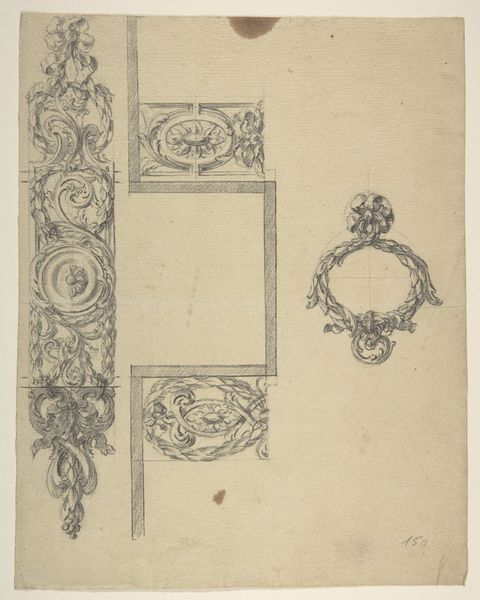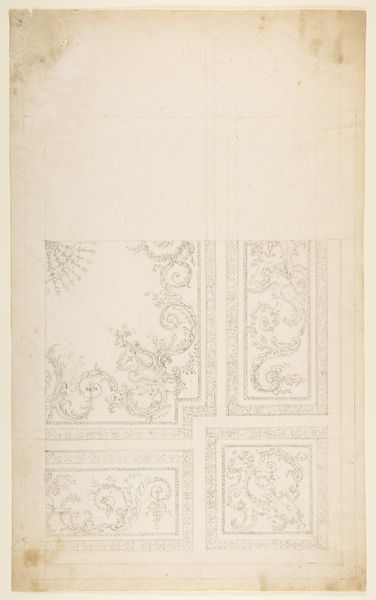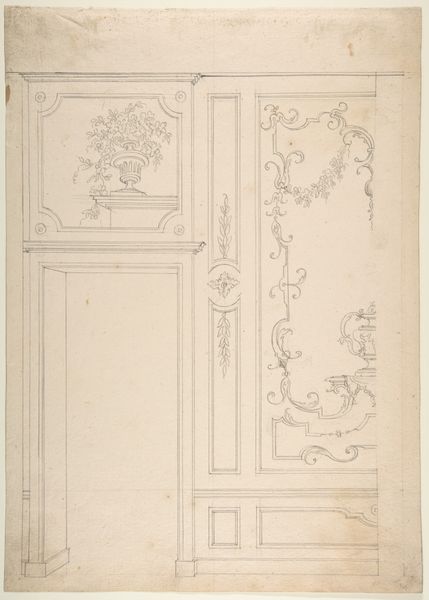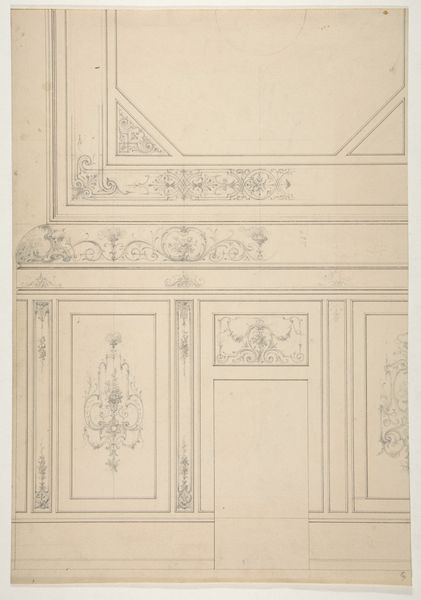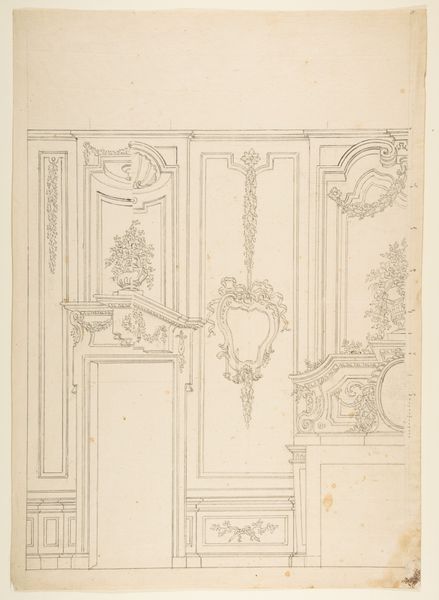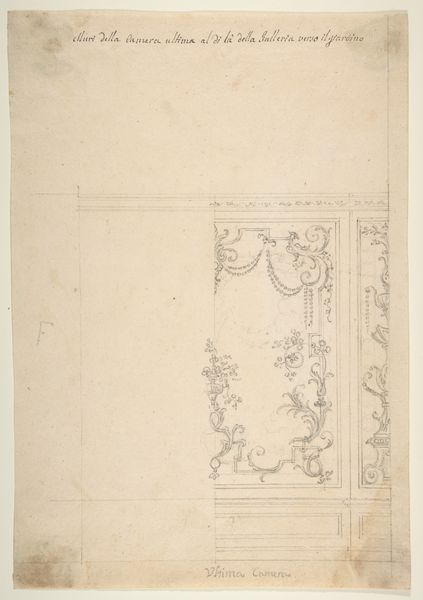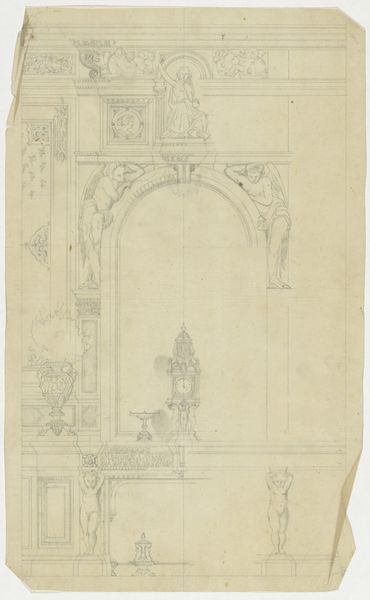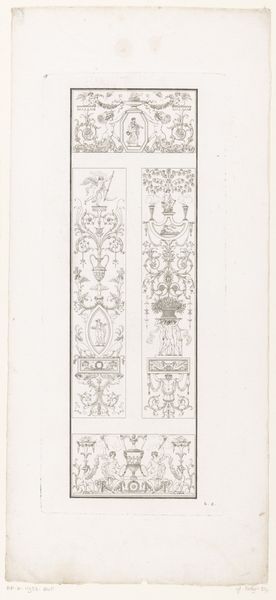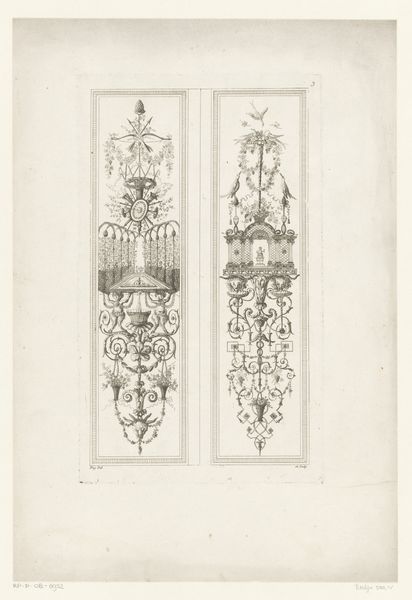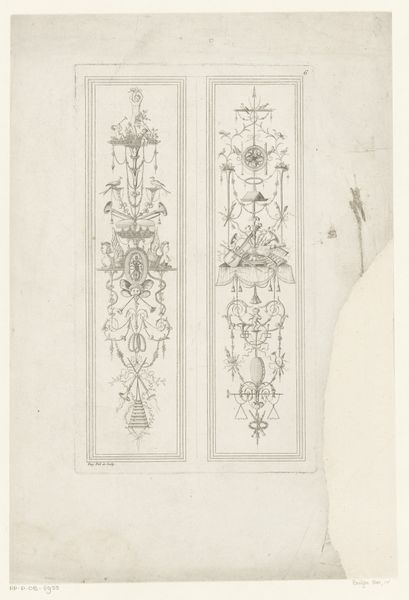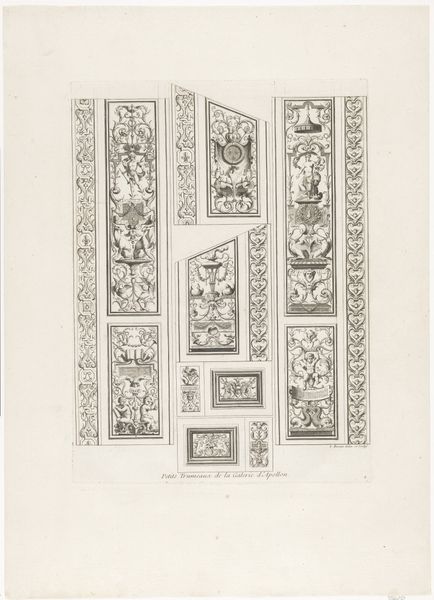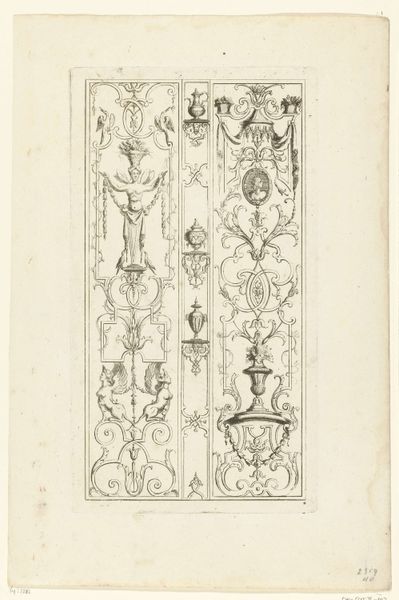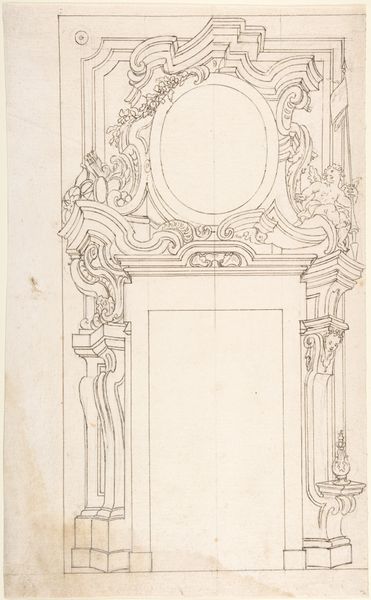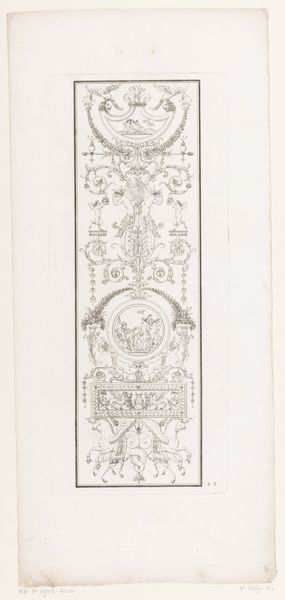
Design for a Wall and a Ceiling Decoration 1774 - 1778
0:00
0:00
drawing, print, etching, paper, architecture
#
drawing
#
neoclacissism
#
toned paper
# print
#
etching
#
etching
#
paper
#
architecture
Dimensions: 18-1/2 x 11-7/16 in. (47 x 29.1 cm)
Copyright: Public Domain
Curator: Looking at this "Design for a Wall and a Ceiling Decoration" created around 1774-1778 by Leonardo Marini, what immediately strikes you? Editor: The delicacy, definitely. The lines are so fine; it feels almost ethereal, like a whisper of grandeur rather than a declaration. I'm curious about the type of paper and the marks that are visible. Was this intended for an aristocratic residence? Curator: Indeed. Marini was operating within the Neoclassical movement, which sought to revive the aesthetics and, symbolically, the values of ancient Greece and Rome. Notice the repeated motifs of vases, foliage, and geometric patterns; they speak of order, reason, and idealized beauty. Editor: And these patterns would then dictate the material execution: stucco work, paint colors, maybe even the types of fabrics chosen for upholstery. Thinking about the skilled labor involved in translating these drawings into physical reality… that’s what I find really fascinating. The social and economic implications of such refined taste! Curator: Exactly! These visual choices reflect a particular cultural moment. Consider the vase as a symbol, for example. It represents not only containment and abundance but also the potential for transformation—holding the promise of flowers or perfumes, altering and elevating our sensations. Editor: So, while on one hand it's about the celebration of this kind of rarefied aristocratic taste, there are still those undertones. What sort of pigments were used, who mixed them and how much did they cost? Curator: An excellent point! The toned paper lends a subdued quality to the whole composition. It's a sophisticated choice that directs the eye toward detail. What lingers for you after having this initial engagement with the artwork? Editor: The labor embedded in this fragile thing. Each decision to select particular material has real cost, be it financial or environmental, when transferred into a lived space. I look at it now and, behind all of the classicizing ornamentation, I hear a sort of ghostly production. Curator: And for me, it is that the Neoclassical motifs offer continuity but a reimagining, suggesting we can revisit and build upon the past without being overwhelmed by it.
Comments
No comments
Be the first to comment and join the conversation on the ultimate creative platform.
